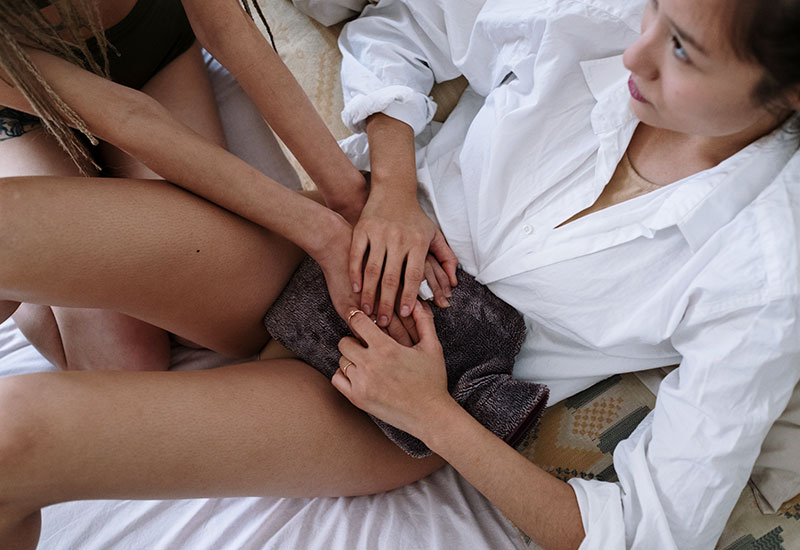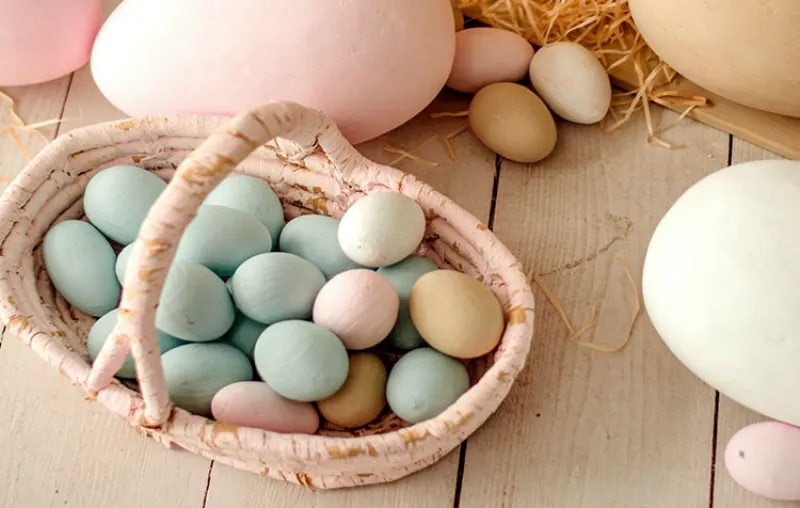What can a sustainable period look like? Most women know it well: once a month, the abdomen starts to pull, the mood sinks into the basement - the period announces itself. When you're in the office, with friends or in public, it's a good idea to have the right period products on hand. After all, you don't want to experience any mishaps.
Women who use tampons use an average of about five per period day. If you consider that most women menstruate for about 40 years, you come to the enormous number of 16,000 tampons. These are usually additionally packaged in a plastic sleeve, which means a huge amount of waste.
However, completely avoiding period products, i.e. practising free bleeding, is also not a real option for most women. But there are other ways to make your period more sustainable and environmentally friendly. In this article, you'll learn five tips for doing so. Let's go!
In advance, a brief overview for you:
- Do without disposable products
- Use menstrual blood as fertilizer
- Relieve pain with heat
- Never dispose of period products in the toilet
- If disposable products, then organic
Notice: This article was developed and written in collaboration with the author Claire Wagner.
1. renounce disposable products

There are a number of period products that you can use over and over again over an extended period of time to keep your Make personal care more sustainable. These include, above all, menstrual cups, washable pads and period underwear.
The latter absorbs the menstrual blood and holds it in place - and looks just like a normal pair of briefs. After wearing them, you can briefly rinse washable sanitary towels and period underwear in cold water and then put them in the washing machine at 40 degrees. Menstrual cups made of silicone, on the other hand, are boiled for a few minutes after your period and can even be used for up to ten years.
2. use menstrual blood as fertilizer
Admittedly - this tip is not for everyone. Many women feel a kind of disgust from their own menstrual blood. Using it to fertilize plants then seems like some kind of crazy ritual. But in fact, menstrual blood contains three essential nutrients that plants need to grow: nitrogen, phosphate and potassium. Because of the high nutrient density it's actually much too good to be dumped down the toilet.
Especially if you use a menstrual cup, it is especially easy to collect the blood. When you empty the cup, you can then simply put it in the soil of your houseplants and cover it a bit. Just give it a try! Worst case scenario, nothing will happen at all. In the best case, your plants will treat you with healthy leaf growth and great flowers surprise.
3. relieve pain with heat

This tip for a sustainable period is less about menstrual bleeding itself and more about one of its annoying side effects: The pain. Most women who suffer from menstrual cramps regularly turn to painkillers. However, there may also be More environmentally friendly and gentler options, to relieve the pain.
Thus, heat usually helps very well to Solve cramps. For this, make yourself comfortable on the sofa and put a hot water bottle on your abdomen.
Attention: Not too hot - that could cause burns. Also gentle sports units like Walks or yoga can help the cramps disappear more quickly.
4. never dispose of period products in the toilet.
Unfortunately, there are still many menstruators who flush their period products such as tampons, pads and others down the toilet. However, you can't just dispose of a tampon in the toilet. It does not dissolve, but continues to soak up water.
This eventually leads to clogged toilets and other problems, which are then solved by costly repairs have to be remedied again. And even if periodic waste does not lead to clogging, it does cause additional (environmental) pollution elsewhere. Waste that ends up in the sewage treatment plant has to be filtered out and transported to the nearest waste incineration plant.
5. if disposable products, then organic

Even if period underwear, cloth pads and co have a number of advantages, still want to and can be not all women permanently abandon disposable products.
In this case, one can at least rely on sustainable Tampons, pads and panty liners made from 100 percent certified organic cotton to fall back on. These are chlorine-free bleached and come without fragrances and other synthetic ingredients, so you also do your health a favor.
They are also a great way to live more plastic free. Theoretically, organic tampons are even compostable - even if it is not allowed to dispose of them in the organic waste in most cities. In contrast to conventional cotton, the cultivation of organic cotton emits significantly less CO2. In addition, genetic engineering is largely avoided, less water is used, and fewer harmful chemicals and pesticides are used.
Use tips for a sustainable period!
These five tips for a sustainable period show that it's not hard to make your menstruation more environmentally friendly with small actions. It sometimes takes a little time to get used to alternatives, but in the long run it's fun to try new things like period underwear or fertilizer made from menstrual blood. If everyone just takes a little care of the world around us, small actions can make a big difference.
I hope this article helps you to menstruate in a more environmentally friendly way. Do you have any questions or further tips? Then I look forward to your comment.
Stay sustainable,

PS.: Have a look at the natural health blog around. For example, learn more tips now that will help you to much more relaxed in everyday life will.






